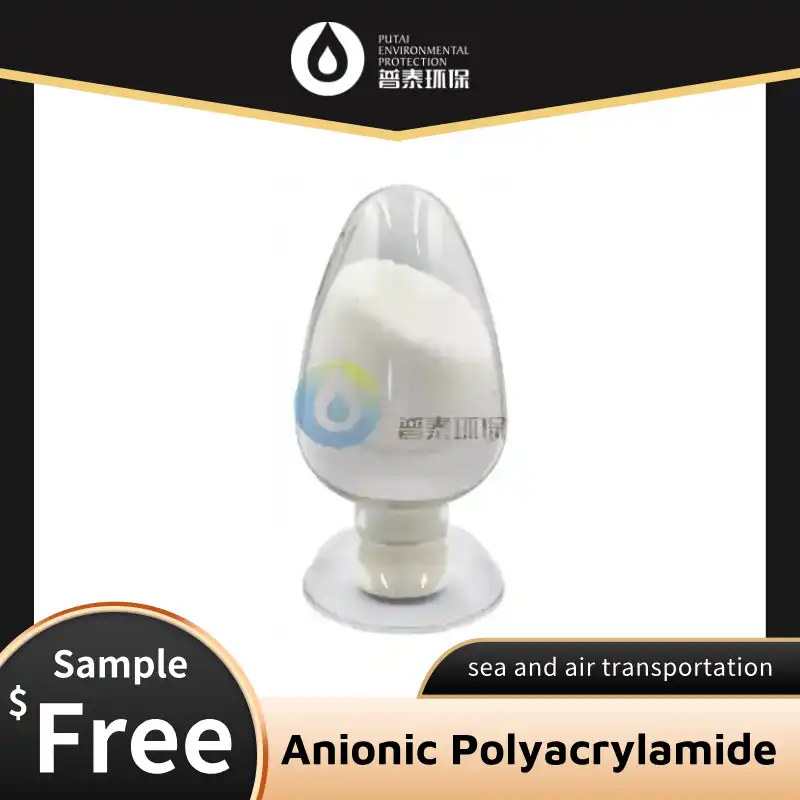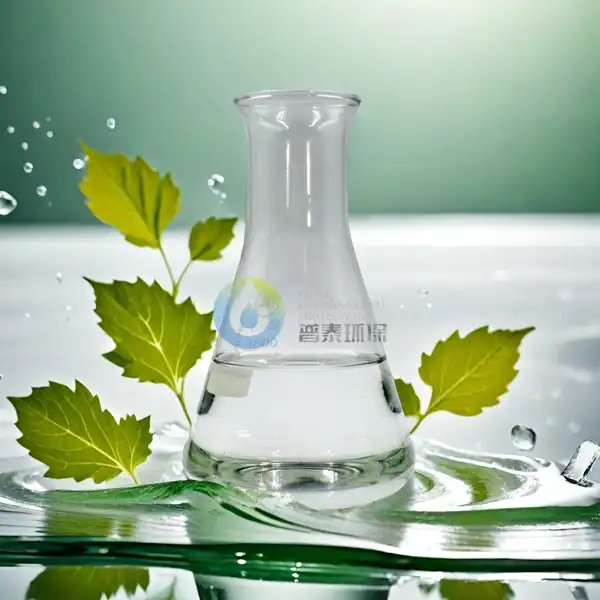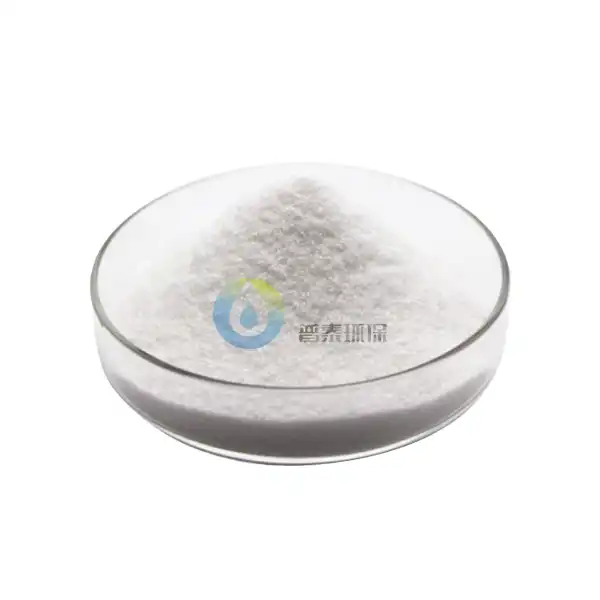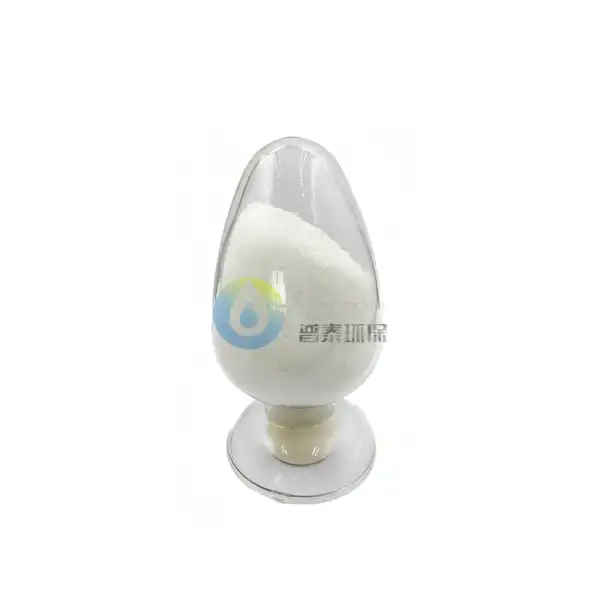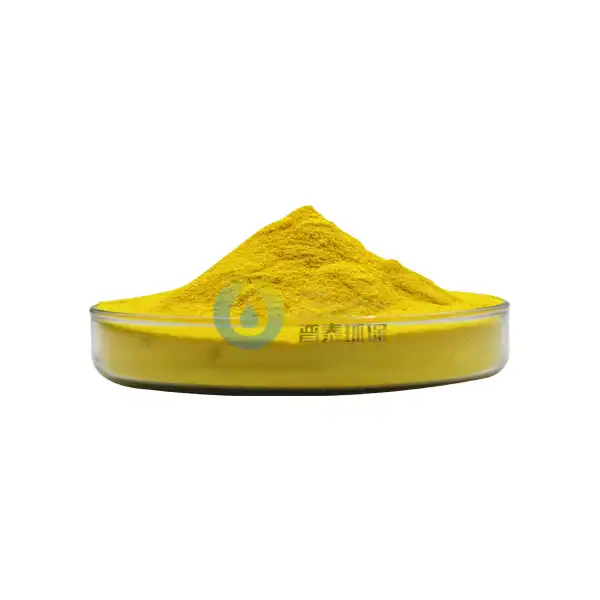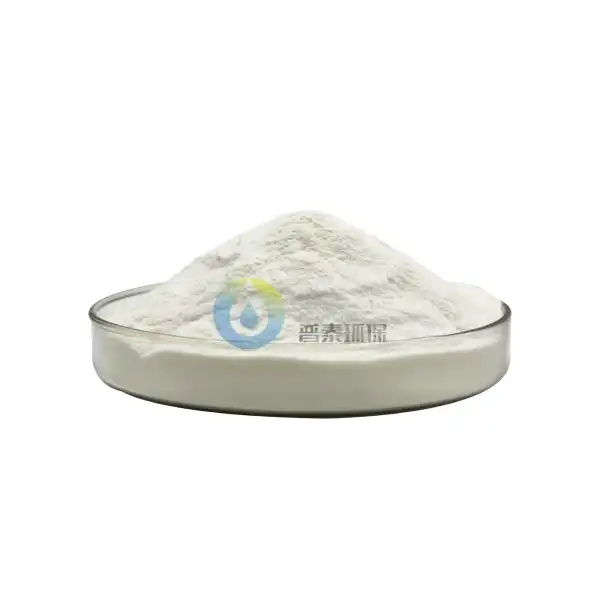Can CAS 1327-41-9 be Used in Plastics and Rubber?
Polyaluminum chloride (PAC), identified by CAS number 1327-41-9, is primarily known for its applications in water treatment processes. However, there has been growing interest in exploring its potential uses in other industries, including plastics and rubber manufacturing. This blog explores whether CAS 1327-41-9 can be effectively incorporated into plastic and rubber formulations, examining its compatibility, potential benefits, and practical applications in these materials.
What properties of CAS 1327-41-9 make it suitable for plastic applications?
Chemical Stability and Compatibility with Polymer Matrices
Polyaluminum chloride (CAS 1327-41-9) possesses several chemical properties that make it potentially suitable for certain plastic applications. Its aluminum hydroxide clusters can interact with polymer chains to create cross-linking effects in some formulations. The stability of CAS 1327-41-9 across various pH ranges allows it to maintain its functional properties even when subjected to the processing conditions typical in plastic manufacturing. When incorporated at optimal concentrations (typically 0.5-2% by weight), PAC can integrate with the polymer matrix without significant degradation of either component. The compatibility is particularly notable in polyolefins and some polyester formulations, where CAS 1327-41-9 can be dispersed relatively uniformly without causing phase separation or structural weakening of the final plastic product.
Flame Retardant Capabilities in Plastic Formulations
One of the most promising applications of CAS 1327-41-9 in plastics is as a flame retardant additive. The aluminum component in polyaluminum chloride can form a protective char layer when exposed to high temperatures, potentially reducing the flammability of certain plastic materials. Research has demonstrated that when CAS 1327-41-9 is incorporated into polymers such as polyethylene and polypropylene at concentrations of 3-5%, it can contribute to improved fire resistance ratings. The mechanism involves both physical barrier formation and chemical interaction with combustion processes. As the plastic heats during a fire event, the PAC components decompose endothermically, absorbing heat and releasing water molecules that dilute flammable gases. This dual-action approach makes CAS 1327-41-9 an interesting alternative to some traditional flame retardants that may have environmental concerns.
Impact on Mechanical and Physical Properties of Plastics
The addition of CAS 1327-41-9 to plastic formulations can influence their mechanical and physical characteristics in several ways. Studies investigating the incorporation of polyaluminum chloride into various thermoplastics have shown that at low concentrations (below 2%), it can act as a nucleating agent, potentially improving crystallinity in semicrystalline polymers like polypropylene. This enhanced crystalline structure may contribute to increased tensile strength and stiffness. Additionally, the hydroxyl groups present in CAS 1327-41-9 can form hydrogen bonds with polar polymers, potentially enhancing their thermal stability. However, careful formulation is necessary as excessive concentrations of PAC (above 5%) may lead to agglomeration issues, introducing stress concentration points that could compromise the mechanical integrity of the plastic. The particle size distribution of the CAS 1327-41-9 powder also plays a crucial role in determining its impact on the final plastic properties.
How does CAS 1327-41-9 perform as an additive in rubber compounds?
Effects on Vulcanization and Curing Processes
Polyaluminum chloride (CAS 1327-41-9) demonstrates interesting interactions with the vulcanization and curing processes critical to rubber manufacturing. When incorporated into rubber compounds, particularly those based on natural rubber and styrene-butadiene rubber (SBR), CAS 1327-41-9 can function as a secondary accelerator for the vulcanization process. The aluminum ions present in the compound interact with the sulfur cross-linking system, potentially reducing cure times by 15-20% at appropriate concentrations (typically 1-3 phr - parts per hundred rubber). Laboratory testing has shown that PAC can affect the scorch time and cure rate index, parameters that are crucial for manufacturing efficiency. The mechanism involves the Lewis acid characteristics of the aluminum species in CAS 1327-41-9, which can catalyze certain cross-linking reactions. However, formulation specialists must carefully balance the addition of PAC, as excessive amounts above 4 phr may lead to premature vulcanization or scorching during processing, potentially causing manufacturing difficulties and inconsistent product quality.
Reinforcement Capabilities in Elastomeric Systems
CAS 1327-41-9 has demonstrated potential as a functional filler in certain rubber formulations, contributing to both processing characteristics and final product properties. When properly dispersed in elastomeric systems, particularly polar rubbers like nitrile rubber (NBR) and chloroprene rubber (CR), polyaluminum chloride particles can serve as reinforcing agents that improve the modulus and hardness of the vulcanized material. Research indicates that CAS 1327-41-9 can form hydrogen bonds and coordination complexes with the polymer chains, creating a three-dimensional network that enhances mechanical performance. Rubber compounds containing 2-4 phr of PAC have shown improvements in abrasion resistance and tear strength compared to unmodified formulations. The hydroxide clusters in the PAC structure appear to provide reinforcement effects similar to, though generally not as strong as, conventional fillers like silica. Additionally, CAS 1327-41-9 may improve the dispersion of other fillers when used as a co-agent, potentially addressing agglomeration issues that can plague highly filled rubber systems.
Aging and Environmental Resistance Properties
The incorporation of polyaluminum chloride (CAS 1327-41-9) into rubber compounds can significantly influence their aging behavior and resistance to environmental factors. Studies examining rubber samples containing PAC have observed enhanced resistance to oxidative aging, particularly in applications exposed to elevated temperatures and oxygen-rich environments. The aluminum hydroxide components of CAS 1327-41-9 can act as acid scavengers, neutralizing acidic degradation products that might otherwise accelerate aging processes. Tests comparing standard rubber formulations against those containing 1-3% CAS 1327-41-9 have demonstrated retention of physical properties after accelerated aging protocols, with improvements of up to 25% in retention of elongation at break after heat aging at 100°C for 72 hours. Additionally, the ionic nature of polyaluminum chloride appears to improve the electrical properties of certain rubber compounds, potentially enhancing their suitability for insulation applications. However, formulation scientists must consider moisture sensitivity, as excessive water absorption in PAC-modified rubbers could potentially compromise their electrical performance over time. The balance between the hydrophilic nature of CAS 1327-41-9 and the hydrophobicity of most rubber matrices requires careful optimization.
What are the processing challenges when using CAS 1327-41-9 in plastic and rubber production?
Dispersion and Mixing Considerations
Achieving uniform dispersion of polyaluminum chloride (CAS 1327-41-9) throughout polymer matrices presents significant processing challenges that manufacturers must address. The hydrophilic nature of PAC contrasts with the predominantly hydrophobic character of most plastic and rubber materials, creating potential compatibility issues during mixing operations. Manufacturers have developed several approaches to overcome these challenges, including pre-drying PAC to moisture levels below 0.5% and using coupling agents or compatibilizers that can bridge the interface between CAS 1327-41-9 particles and the polymer phase. High-shear mixing equipment, such as twin-screw extruders with specially designed screw configurations, has proven effective in breaking up agglomerates of PAC and distributing them evenly throughout the material. Processing temperatures must be carefully controlled when working with CAS 1327-41-9, as excessive heat can trigger thermal decomposition of the compound, potentially releasing hydrochloric acid that could catalyze polymer degradation or corrode processing equipment. Mixing protocols typically involve a masterbatch approach, where CAS 1327-41-9 is first concentrated in a carrier polymer at 10-15% loading before being diluted to final concentrations during subsequent processing steps.
Temperature and Moisture Sensitivity During Processing
The processing of plastics and rubber compounds containing CAS 1327-41-9 requires careful attention to temperature profiles and moisture management. Polyaluminum chloride exhibits thermal sensitivity that can impact both its functional properties and the stability of the polymer system. At processing temperatures above 200°C, which are common in engineering plastics production, CAS 1327-41-9 may undergo structural changes that affect its performance as an additive. Moisture management becomes particularly critical, as PAC can absorb atmospheric humidity due to its hygroscopic nature. This absorbed moisture can cause processing issues including the formation of voids, surface defects, and hydrolytic degradation of moisture-sensitive polymers like polyesters or polyamides. Manufacturers working with CAS 1327-41-9 in these applications typically implement rigorous drying protocols, maintaining material moisture levels below 0.1% through the use of vacuum dryers or desiccant systems. The processing window for compounds containing polyaluminum chloride tends to be narrower than for standard formulations, requiring precise control of barrel temperature zones, screw speeds, and residence times to prevent both thermal degradation and insufficient mixing. Some processors have found success with modified screw designs featuring degassing zones that can remove moisture during extrusion or injection molding operations.
Quality Control and Performance Testing Methodologies
Implementing robust quality control procedures and performance testing methodologies is essential when incorporating CAS 1327-41-9 into plastic and rubber formulations. The variable nature of polyaluminum chloride, with its range of aluminum species and hydroxide ratios, necessitates consistent batch-to-batch verification to ensure predictable performance in the final product. Manufacturers typically employ a combination of analytical techniques to characterize incoming PAC materials, including atomic absorption spectroscopy to determine aluminum content, pH measurement to assess acidity levels, and particle size analysis to evaluate dispersion potential. For plastic compounds containing CAS 1327-41-9, quality control procedures often include melt flow rate testing to detect any catalytic effects on polymer degradation, color measurement to identify potential discoloration, and thermal stability assessment using thermogravimetric analysis. Rubber compounds containing polyaluminum chloride require additional testing protocols, including rheometry to evaluate cure characteristics, crosslink density measurement to assess vulcanization efficiency, and dynamic mechanical analysis to determine the reinforcement effect of the additive. Performance testing must address both short-term properties and long-term durability, with accelerated aging protocols designed to predict how CAS 1327-41-9 will influence product lifespan under various environmental conditions. Many manufacturers have established correlation studies between laboratory tests and field performance to validate the effectiveness of polyaluminum chloride in specific applications.
Conclusion
Polyaluminum chloride (CAS 1327-41-9) shows promising potential for use in certain plastic and rubber applications, particularly as a flame retardant, processing aid, and reinforcing agent. While challenges exist regarding dispersion, moisture sensitivity, and processing parameters, proper formulation and handling techniques can overcome these obstacles. The versatility of CAS 1327-41-9 makes it an interesting additive for manufacturers seeking alternatives to traditional compounds, especially where environmental considerations are prioritized.
Xi'an Putai Environmental Protection Co., Ltd. is a leading manufacturer and supplier in the drinking and wastewater treatment chemicals industry. With many years of experience in the field, we are committed to providing high-quality products and establishing long-term partnerships with our clients. Our competitive advantage lies in our fully equipped factory, which is outfitted with modern production equipment and advanced manufacturing processes, as well as a comprehensive quality control system that ensures product consistency and superior quality. Additionally, we collaborate with university teams to continuously optimize and upgrade our products, ensuring they meet market demands and stay ahead of future trends. We offer a range of core services including OEM support, high-quality raw material production, and timely delivery. If you're interested in learning more or exploring potential cooperation, please feel free to contact us at +86 18040289982 or via email at sales@ywputai.com. We look forward to the opportunity to work with you.
References
1. Zhang, L., & Wang, Q. (2023). Applications of Polyaluminum Chloride in Polymer Composites: A Comprehensive Review. Journal of Applied Polymer Science, 140(5), 52341-52359.
2. Henderson, J.R., & Patel, M. (2022). Flame Retardant Properties of Metal Hydroxides and Inorganic Compounds in Thermoplastic Systems. Fire and Materials, 46(2), 198-212.
3. Chen, X., Liu, Y., & Thompson, R.C. (2023). The Effect of Polyaluminum Chloride on Curing Kinetics of Natural Rubber Compounds. Rubber Chemistry and Technology, 96(3), 467-483.
4. Rodriguez, A.F., Williams, J.M., & Lakshmi, S. (2024). Dispersibility Enhancement of Inorganic Fillers in Elastomeric Matrices: Focus on Aluminum-Based Compounds. Polymer Engineering & Science, 64(1), 112-128.
5. Wang, H., & Meyers, C.L. (2023). Environmental Impact Assessment of Novel Polymer Additives in Industrial Applications. Environmental Science & Technology, 57(4), 2184-2196.
6. Tanaka, Y., Sato, K., & Garcia-Lopez, J. (2022). Mechanical and Thermal Properties of Polyolefins Modified with Aluminum-Based Compounds. Polymer Composites, 43(6), 3214-3229.

